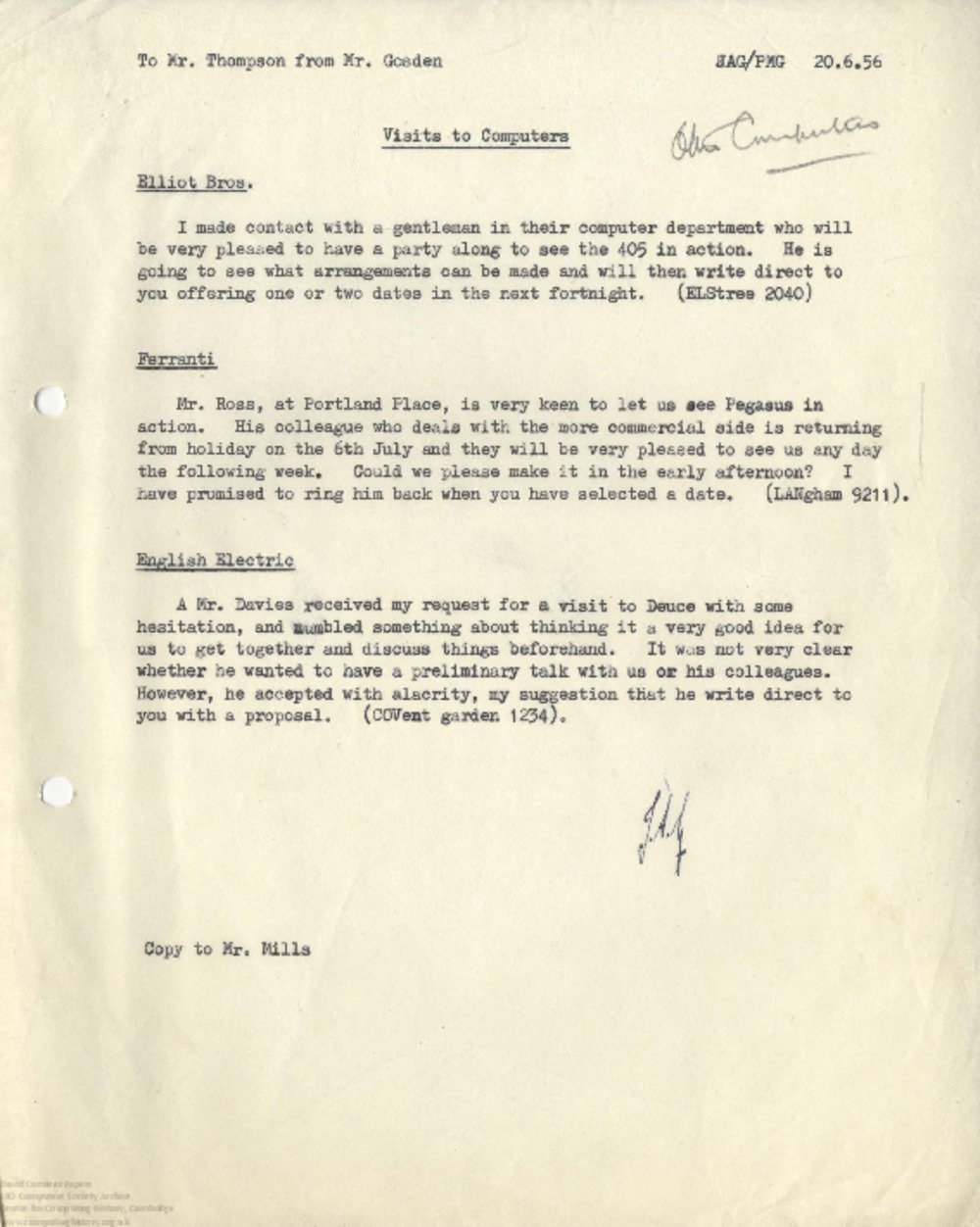
| Home > LEO Computers > Lyons Electronic Office (LEO) Archive > CMLEO/DC - David Caminer Papers > Working Files > Other Computers > 63109 Visits to Ellio ... ctric, June-July 1956 |
63109 Visits to Elliot, Ferranti and English Electric, June-July 1956
| Home > LEO Computers > Lyons Electronic Office (LEO) Archive > CMLEO/DC - David Caminer Papers > Working Files > Other Computers > 63109 Visits to Ellio ... ctric, June-July 1956 |
|
Correspondence and notes concerning research visits by members of the LEO team to other computers at Elliot (sic, Elliott), Ferranti and English Electric.
Research comments: Notes on a series of visit which seem to be LEO COmputers sizing up their competitors. Some interesting descriptions of the Elliott 405 and the Ferranti Pegasus computers including some comparisons with LEO I and LEO II. Also refers to the English Electric Deuce. The Elliot 405 is referred to as a relatively slow serial computer using 16 word nickel delay lines for storage. It uses both magnetic drums and magnetic film which works along the lines Lyons had attempted with the failed STC conversion/reconversion equipment on LEO I. The team report that there is no sign of any process of marginal testing, which the LEO team considered to be essential in a commercial environment. The Elliott staff they met with considered LEO a close competitor. The Ferranti Pegasus is referred to as a "splendidly engineered" compact machine. It has "a very high speed store of 128 double compartments, composed of double compartment nickel delay lines, and an auxiliary store housed on a drum of 4096 double compartments". The team are unimpressed with the demonstration clerical tasks they witness. The team state that De Havilland have used the Pegasus at a similar speed to that which they have used LEO I for, although without the possibility of visible printing. Ferranti do not seem to have the commercial user in mind: "There is no evidence that Pegasus makes any particular concession to the differing needs of the clerical, as opposed to the mathematical, user. There is no built in conversion or reconversion. Separate input channels are not planned. The drum is limited to 4096 double compartments." In addition, "There is no evidence whatsoever of any experience in planning, programming, or operating clerical jobs, or in making a proper system survey or in framing a clerical system. Equally, and perhaps more surprising, experience in providing a full mathematical service, seems to be comparatively small." This leads John Gosden, the author ofthe Pegasus notes, to conclude that the Pegasus is no threat to LEO because "in the fundamental of having experience of clerical jobs, they are nowhere at all"! (LM) Date : 20th June 1956 to 23rd July 1956Physical Description : 1 file (20 pages), paper; typescript with manuscript annotations Provenance : Archive References : CMLEO/DC/WF/OTH/44 , DTC/3/6/170-189 , DCMLEO20210322170-189 This exhibit has a reference ID of CH63109. Please quote this reference ID in any communication with the Centre for Computing History. |
 This document has been scanned and is available to view online.
Copyright Lyons copyright File Size: 6.32 MB
|









